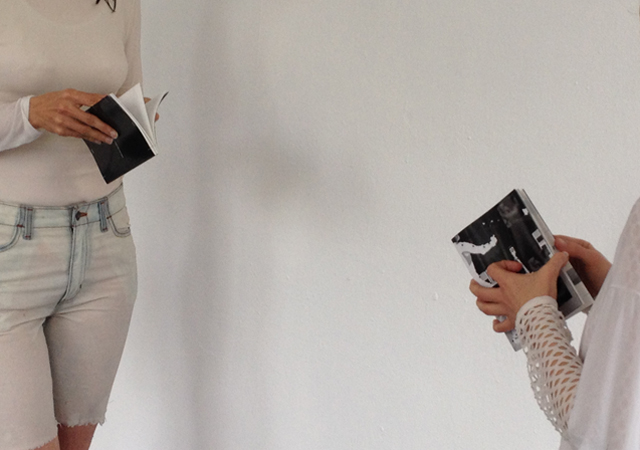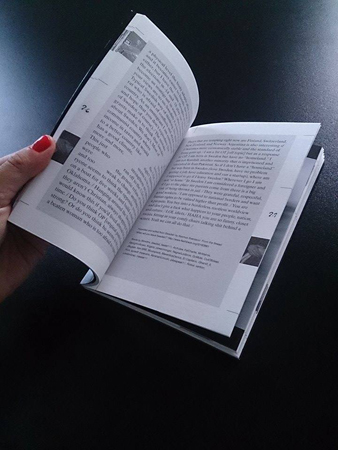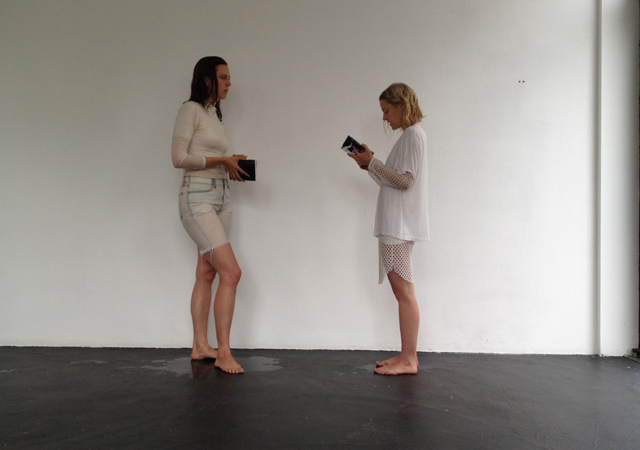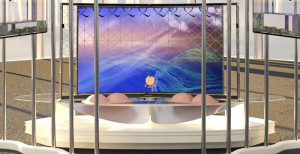A continual tug-o-war between control and resistance is seemingly built into the paradigmatic contorts of every communication system. Perhaps the most interrogated of these are online environments, particularly those that emerged in the wake of the 2.0 ‘revolution’, which replaced a (arguably) chaotic system of peer-to-peer networking with a series of rotating corporate platforms and the google “safe-search” bar. When considering the structures that facilitate not only online, but all levels of interaction, one looks at the extent of manipulation occurring at the point that a message is mediated between two, or multiple indices. What role do we, as both source and recipient of information, play in the contortions and or clarifications of that data and in what ways are these manipulations (un)available to us, for purposes of resistance? Such problematics are at the fore in discussions of interfaciality.
Taking its name, a gesture waves us on, answering our own wave, from a poem by Rainer Maria Rilke, this new publication release with text contributions from eight participating artists, writers, designers, architects and theorists – including Jenna Sutela‘s ‘Ill-Suited Primate’, a text expansion of the video essay ‘When You Moved’ (2014), written together with Elvia Wilk – is an undertaking by the enigmatic Berlin art project V4ULT.

It’s a curatorial platform initiated by Anna Mikkola and Hanna Nilsson. Pushing the conceptual limits of physical space, they turned a closet-sized room in their shared studio into an exhibition space, extending into virtual space by way of their website and describing the platform as “an interface of sorts, a space between us, the people we work with, and our audience.” The release of this publication “marks the end of the first episode” of their curatorial program and develops a discussion of interfaciality, beyond networking and computing, zooming “into scenarios where an entity interacts with its context.”
The publication opens with Harry Burke‘s essay, ‘Interfacial WYSIWYG :P’, a deft glimpse into the ideological reach of digital interfaces, their translation into IRL topographies, as well as the interface as a potential site of resistance. Continuing the theme of disruption, Lucy Chinen looks beyond structural contingencies of social media platforms to suggest that it may be the data and meta data – chats, likes, posts – rather than the structures themselves that could provide the necessary information for understanding the swell and quell of social movements. Analogous to linking “climate change and the increase in extreme weather conditions to human activity”, Chinen recommends making a causative link between political activity online and offline gatherings and protest as an act of empowerment.
Referencing V4ULT’s own self-identification as an interface, Benjamin Bratton‘s essay, ‘Interface Typologies on Design Strategy’, extrapolates multifarious understandings of it across a seemingly endless list of opposites – mobile/immobile, singular/plural, fast/slow, signifying/asignifying – reaching out from the digital, beyond the screen, he details the “relational measures of performance” of everything from a roadblock, to a river to a button with words on it. Offering us a condition among definitions; “For something to really become interfacial it must also somehow govern the conditions of exchange between two different systems that is mediates.”

In graceful prose, Elvia Wilk contemplates the relational functionality of ratios – for which the colon, “a membrane…inserted into the equation”, is the interface – with her closing essay, ‘Ratioratio’. She cleverly toys with the ratio as a tool of demarcation that does not fall prone to the dichotomous, reductive regressions of the binary.
Likely an inadvertent reference to the book-publication-paper-page interface, Wilk writes, “a good interface minimizes itself, fading the dots between virtualreal”, a sentiment reiterated by Bratton and elaborated through the design of the publication as an object-interface. A reference to the swipe action used to turn a page on an e-book, there is a diagonal stroke of negative space running down each left page, a book imitating an e-book imitating a book; relational layering, a design joke that simultaneously inhibits the readability of text on the page, whilst making it impossible to ignore its fixed materiality. As such, design dictates the mode of communication, of consumption. In his essay ‘100% Design, Zero Tolerance’, Martti Kalliala explores design, not only as a tool of limitation but also as an answer to intransigence; “there is another, more indirect, and likely more effective mode of struggle: more design.” He offers ‘design failures’; “incompatibility, bottlenecks, and agonism as a mode of freedom.”

What happens when a text, an idea, a concept is freed from its context and placed within a new interface? Jesse Darling‘s contribution about the “ghostmodernity of snapchat”, originally posted as a facebook status, has been transplanted into the publication. Denuded of its likes and comments, removed from its digital environment of blue, white and hapless algorithmic noise, transplanted onto a flat, fixed grey and white page, offers up the problematic of interfacial transplantation as tangible experience. So too does Rasmus Svensson‘s text, ‘Server Closet’, edited and translated from a Swedish comments thread, “When will you leave Sweden”. He collates expressions of “profound xenophobic hostility” for the printed the page and they jab, jar and confuse in a manner that such words online – by way of their prevalence across the web – have (perhaps) ceased to do.
Discussions addressing the negotiation between form and content are by no means new. Whilst it might not be exactly ‘hot topic’ right now, the relevance of the discussion has not waned; the problems are not solved and the conditions of our interactions through and with interfaces are ever changing and cannot definitively be known. This new publication that “looks at interfaces in an expanded field” – though reading it, at times, feels akin to the extraneous beatings of a dead horse – is not an unwelcome contribution to a continuing, broad-based conversation.**
















